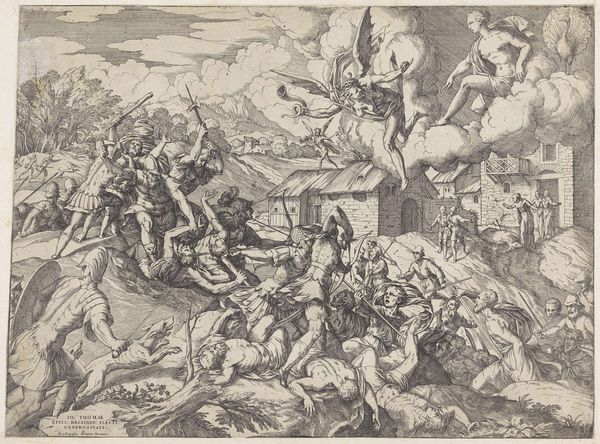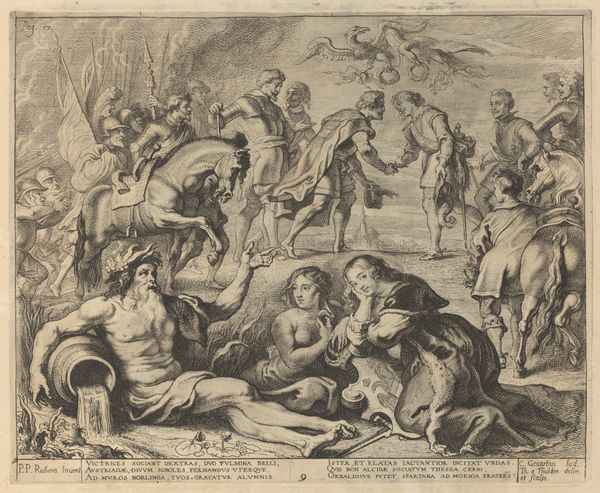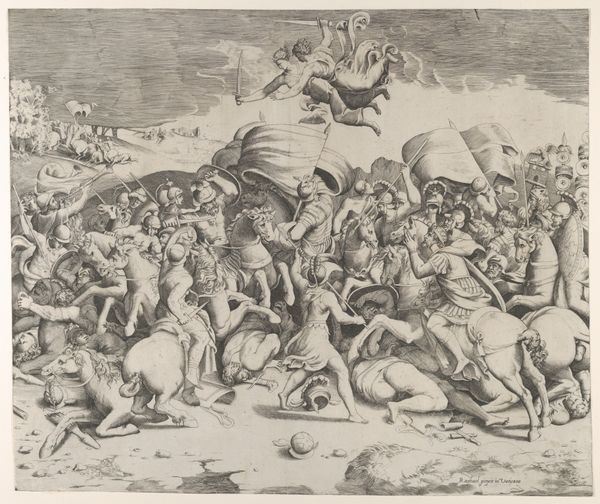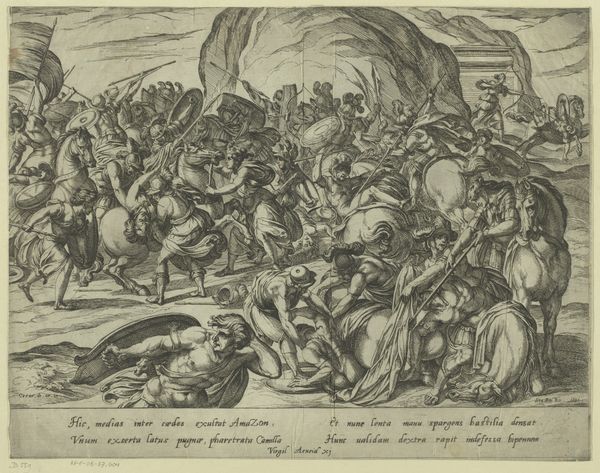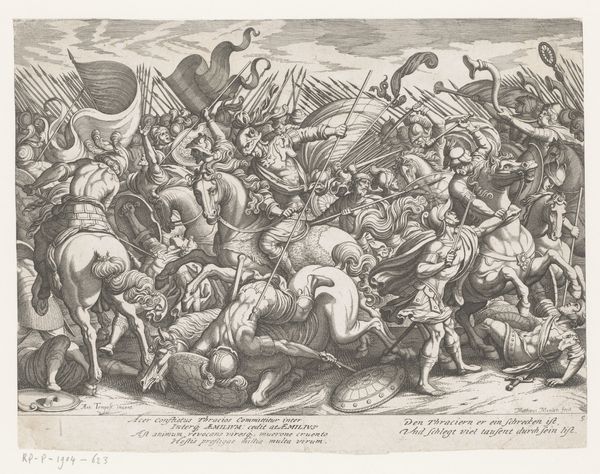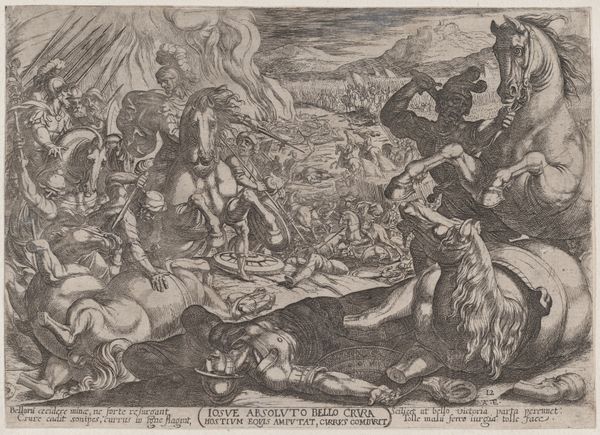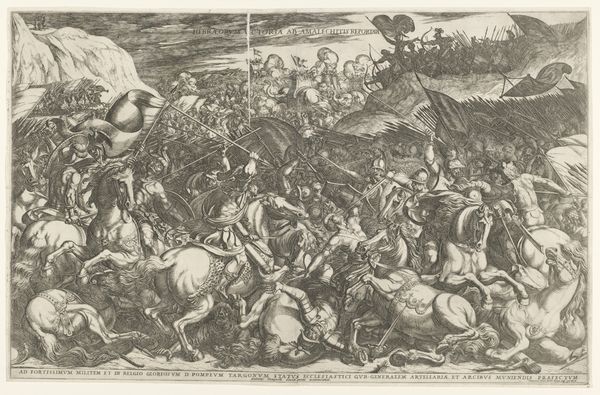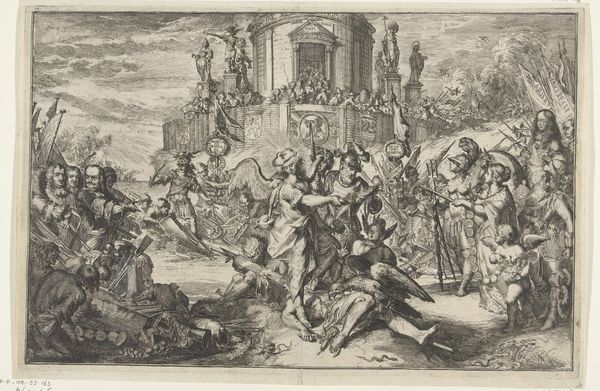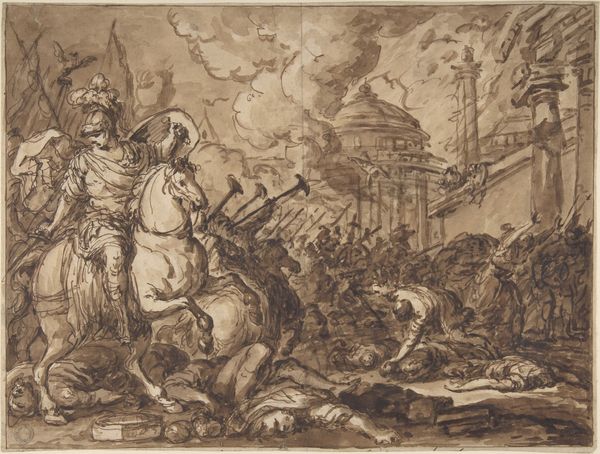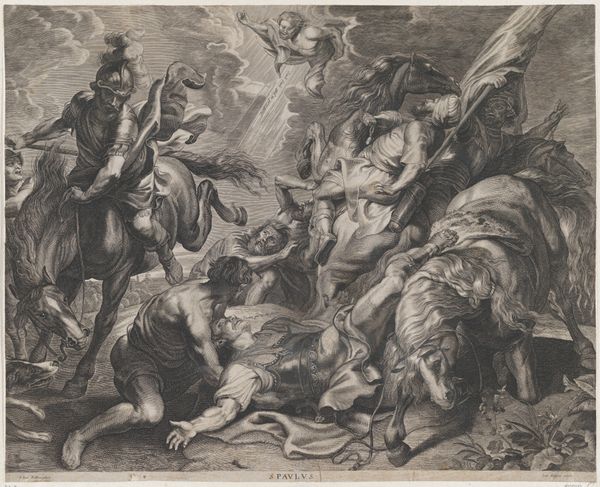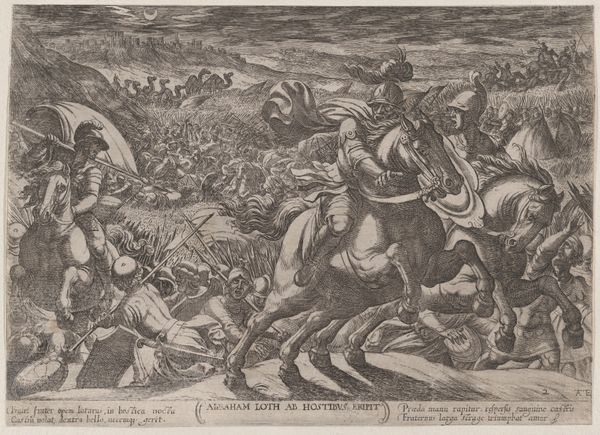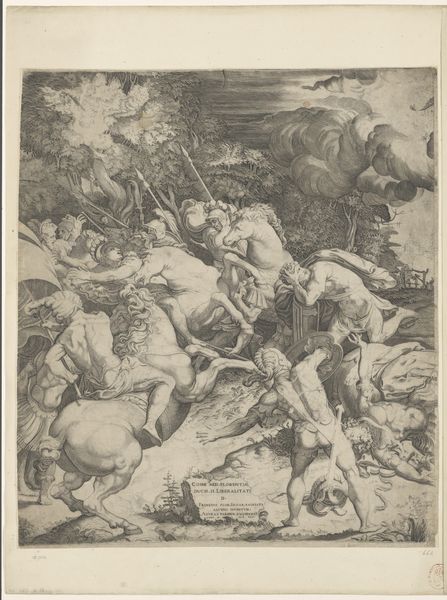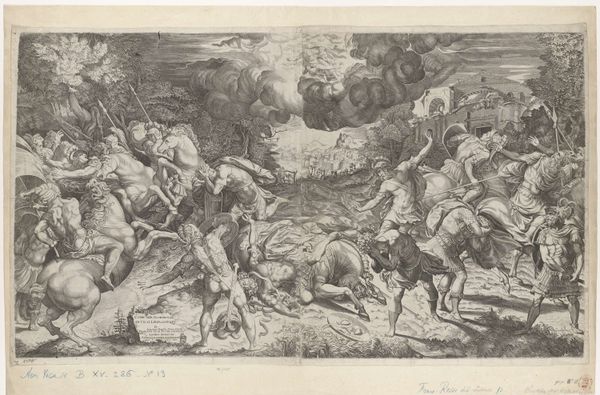
Copyright: Public Domain
Curator: Here we have Cornelis Cort’s “The Conversion of Saint Paul,” an engraving from 1576. I’m struck by the dramatic play of light and shadow. The scene practically vibrates with intensity. Editor: Yes, that stark contrast creates an undeniable visceral response. The entire composition feels theatrical; the weight of the image centers upon the figures who dominate the picture plane and direct the gaze towards Saint Paul on the ground. But, looking at the method behind the production, engraving is interesting; the material properties involved and the labor intensivity behind such minute details always give me a lot to think about. Curator: Indeed, look how Cort uses the engraving technique to delineate every muscle, every fold of drapery. He employs line weight masterfully, differentiating the celestial realm from the earthly chaos. Notice the Baroque dynamism, how everything spirals outward from the fallen Paul. Editor: Right, all the while those material processes had political and economic ramifications. Engravings were crucial for disseminating ideas and religious beliefs at the time. The accessibility and reproducability, while beautiful in and of themselves, point to broader questions of authority and access within the medium. The transformation depicted isn’t merely personal; it implicates larger shifts in knowledge economies and power structures. The lines weren’t just aesthetic, they were about getting a message to as many people as possible at a lower cost. Curator: That is astute. Though focusing solely on its formal aspects reveals so much as well, the positioning of the figures creating these overlapping forms that create a sense of immediacy. It's more than mere narrative, it's carefully calculated visual drama. Consider, for example, how Paul's outstretched hand echoes the gesture of the divine figures above, connecting the earthly and spiritual realms in a single, potent visual statement. Editor: True, that’s important in our analysis, though understanding how widely distributed those formal relationships became due to the rise in engravings, it does make you think, doesn’t it? I leave appreciating Cort’s talent but also thinking critically about its historical life beyond its inherent structure.
Comments
No comments
Be the first to comment and join the conversation on the ultimate creative platform.
